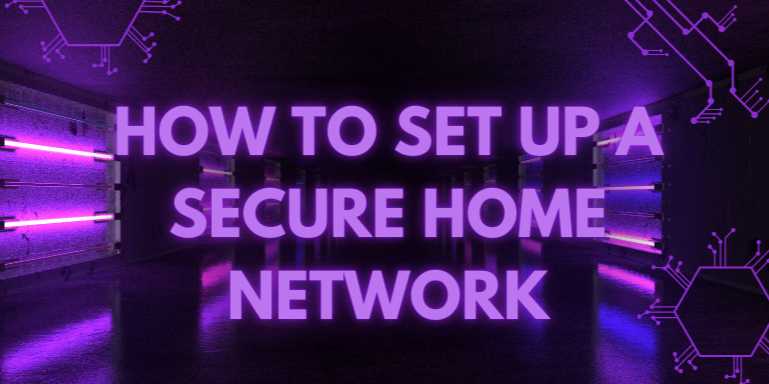How to Set Up a Secure Home Network: The Ultimate 2025 Guide to Protecting Your Wi-Fi, Devices & Data

📙 Chapter 3: Wi-Fi & Device-Level Security Setup
🧠 Introduction
In today's interconnected world, securing your Wi-Fi network
and the devices connected to it is paramount. Cyber threats are evolving, and
vulnerabilities in your network can lead to unauthorized access, data breaches,
and compromised personal information. This chapter provides a step-by-step
guide to fortifying your Wi-Fi and device-level security.
📡 Securing Your Wi-Fi
Network
1. Use Strong Encryption
- Enable
WPA3 Encryption: If your router supports it, enable WPA3 for enhanced
security. If not, use WPA2 as a minimum.
- Disable
WEP and WPA: These are outdated and vulnerable encryption methods.
2. Change Default Credentials
- Router
Admin Credentials: Change the default username and password to prevent
unauthorized access.
- Wi-Fi
Network Name (SSID): Avoid using personal information in your SSID.
3. Disable WPS (Wi-Fi Protected Setup)
WPS can be exploited by attackers to gain access to your
network. It's advisable to disable this feature.
4. Enable Network Firewall
Ensure your router's firewall is active to monitor and
control incoming and outgoing network traffic.
5. Set Up a Guest Network
Create a separate network for guests to prevent them from
accessing your main network and devices.
📱 Securing Individual
Devices
1. Keep Software Updated
Regularly update the operating systems and applications on
all devices to patch security vulnerabilities.
2. Use Strong Passwords and Authentication
- Unique
Passwords: Use complex, unique passwords for each device and account.Information Security Stack Exchange+5Wikipedia, la
enciclopedia libre+5ekahau.com+5
- Two-Factor
Authentication (2FA): Enable 2FA where available for an added layer of
security.
3. Install Antivirus and Anti-Malware Software
Protect devices from malicious software by installing
reputable security programs.
4. Disable Unused Services
Turn off services like Bluetooth, NFC, and location services
when not in use to reduce potential attack vectors.
5. Regular Backups
Regularly back up important data to secure storage solutions
to prevent data loss in case of an attack.
📊 Security Features
Comparison Table
|
Feature |
Wi-Fi Network |
Individual Devices |
|
WPA3 Encryption |
✅ |
❌ |
|
Strong Passwords |
✅ |
✅ |
|
Two-Factor
Authentication |
❌ |
✅ |
|
Firewall |
✅ |
✅ |
|
Regular Software
Updates |
✅ |
✅ |
|
Antivirus/Anti-Malware |
❌ |
✅ |
|
Disable Unused
Services |
❌ |
✅ |
|
Regular Backups |
❌ |
✅ |
📚 Conclusion
Securing your Wi-Fi network and individual devices is a
continuous process that requires vigilance and proactive measures. By
implementing the strategies outlined in this chapter, you can significantly
reduce the risk of cyber threats and protect your personal information.
FAQs
❓1. Why is it important to secure my home network?
Answer:
Your home network connects all your devices, including laptops, phones, smart
TVs, and IoT gadgets. An insecure network is an open invitation for hackers to
steal personal data, spy on you, hijack your bandwidth, or launch cyberattacks
from your IP address.
❓2. What is the first thing I should do to secure my Wi-Fi?
Answer:
Change your default router admin username and password. Then update the
firmware and change the Wi-Fi SSID and password to something
unique and strong. These steps prevent unauthorized access from neighbors or
bots scanning default router settings.
❓3. Should I buy a separate router instead of using my ISP’s?
Answer:
Yes. ISP-provided routers often have limited features, outdated firmware, and
known vulnerabilities. A personal router offers more control, security
features, better performance, and support for standards like WPA3 and VPNs.
❓4. What’s the difference between WPA2 and WPA3?
Answer:
WPA3 is the latest Wi-Fi security protocol. It offers stronger encryption,
protection against brute-force attacks, and forward secrecy. If
all your devices support WPA3, enable it. Otherwise, use WPA2 as a minimum.
❓5. Is setting up a guest Wi-Fi network really necessary?
Answer:
Yes. A guest network isolates visitors and smart devices from your main
devices, reducing the risk of malware spreading or unauthorized access to
sensitive files and printers on your main network.
❓6. What is a DNS filtering service and should I use one?
Answer:
DNS filtering services like Cloudflare for Families or OpenDNS
block access to malicious websites before they load. It’s like a web filter
that protects all your devices, and it’s simple to set up on your router.
❓7. How often should I update my router firmware?
Answer:
Check for firmware updates at least once a month or enable auto-updates
(if supported). Updates patch known vulnerabilities and sometimes improve
performance or security features.
❓8. Do I need a firewall if my router already has one?
Answer:
Yes, most routers have a basic firewall, but it’s good to layer your
defenses. Install software firewalls on devices (like Windows
Defender or Little Snitch for Mac), and consider a hardware firewall
(like pfSense) if you want full control.
❓9. Is using a VPN on my home network worth it?
Answer:
Yes, especially if you want to encrypt all internet traffic and hide
your IP address from ISPs, governments, or hackers. Router-level VPNs cover
all connected devices; app-level VPNs are easier to control per device.
❓10. How can I tell if someone is stealing my Wi-Fi?
Answer:
Use apps like Fing or check your router’s admin panel to view connected
devices. Look for unknown names or MAC addresses. If in doubt, change your
Wi-Fi password and re-authenticate your devices manually.



Comments(0)